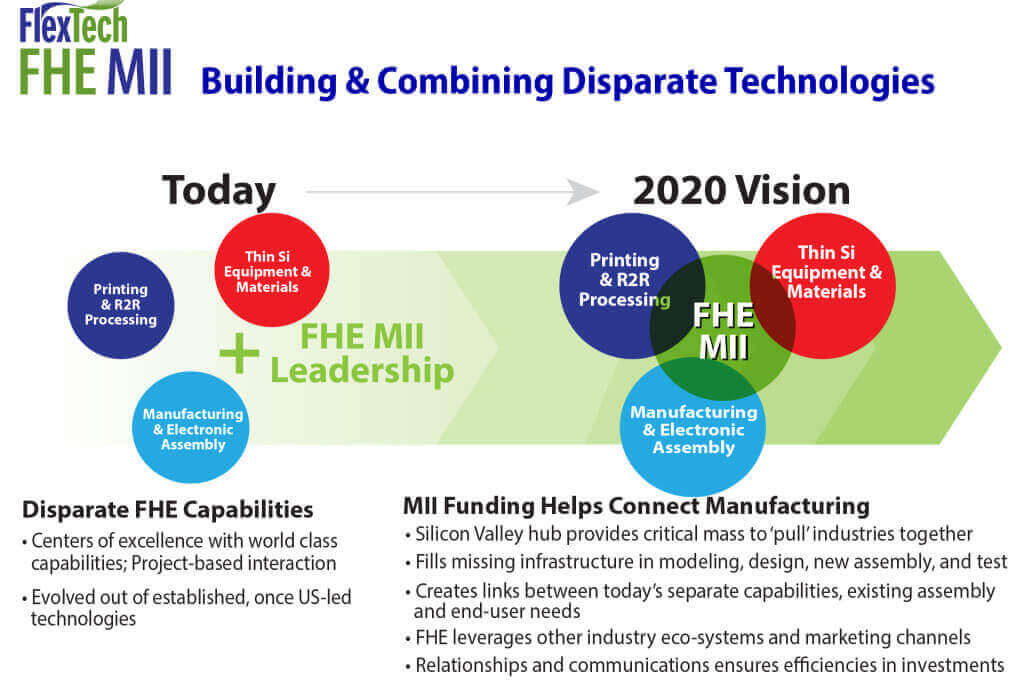The US Department of Defense partners with industry leaders Apple, Boeing & MIT in FlexTech Alliance to create 3D printed flexible wearables.
An impressive consortium of leading technology companies, laboratories, and universities has partnered with the US Department of Defense to improve the manufacturing of flexible electronics, which could one day end up in aircraft, health monitors, military tools, or consumer electronics like wearables. The goal is to have highly advanced 3D printed flexible wearables by 2020.
The DoD is awarding the consortium, called the FlexTech Alliance, $75 million over 5 years, with other sources, including universities, non-profits, and state and local governments, contributing an additional $96 million. The funds will be managed via a new Manufacturing Innovation Institute for Flexible Hybrid Electronics.
The consortium is composed of 96 companies, 11 specialized laboratories, 42 universities, and 14 state and regional organizations, with key partners including Apple, Boeing, General Electric, General Motors, Lockheed Martin, Motorola Mobility, and Qualcomm, and more. Partnering universities include Cornell, Harvard, Stanford, NYU, MIT, among many others.
https://youtu.be/IYfD4sXahJI
Generally, FlexTech and the DoD have said they want to reduce the size, weight, and cost of electronics, while making flexible electronics viable for use across disciplines. The government funding is also intended to establish a manufacturing network for flexible electronics across the United States.
3D printing technologies will play a key role in the whole project, where components will be customized, developed and rapidly prototyped using additive manufacturing. FlexTech Alliance has the experience and know-how to effectively bring this technology to the lab bench, and from there to commercialization.
The first applications will likely be military-oriented, so we may see things like custom uniforms that utilize sensors to monitor a soldier’s vital signs and status. Pressure sensors could also be incorporated in non-human vehicles to check deformation in various key parts of their structure etc. There are literally hundreds of application possibilities envisaged at this early stage.
Looking beyond military use, similar 3D printed flexible wearables will help athletes to monitor and improve their performance, whilst people at risk of cardiac arrest or seizure can routinely monitor their vital signs and prevent an emergency. The technology could even allow crowded hospitals to mass monitor all of its patients.
The FlexTech Alliance also hopes to increase general education and interest around flexible electronics, so that more researchers will be available to build upon their work and push the field forward in the future.
License: The text of "FlexTech Alliance to develop 3D Printed Flexible Electronics" by All3DP is licensed under a Creative Commons Attribution 4.0 International License.
